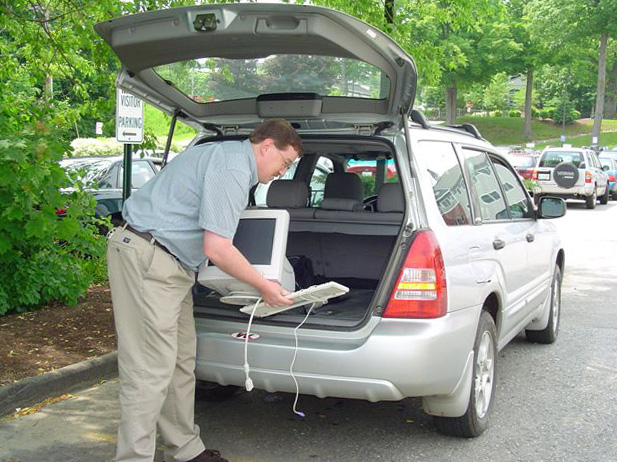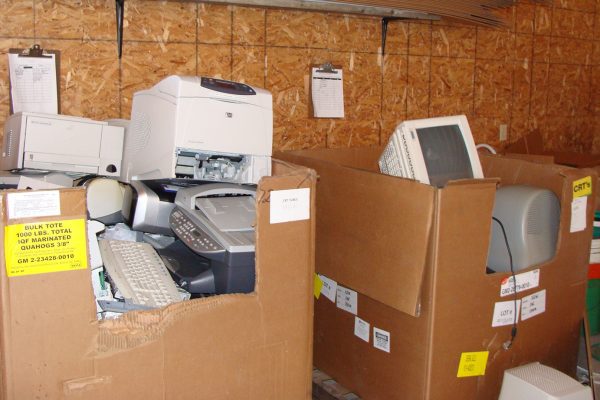Electronic Waste (“e-waste”)

Maine has many places you can bring your old computer, TV, or printer to be recycled
Society today relies heavily on the use of electronic products, many of which become outdated in a very short time, leading to a significant amount of problematic electronic waste (e-waste). E-waste such as televisions, computers, and computer components contain toxic substances, including lead, mercury, cadmium, lithium, brominated flame retardants, phosphorous coatings, and PVC plastics that create dioxins when burned. These toxic materials can be released when e-waste is improperly disposed of in a landfill or waste-to-energy facility, posing a threat to human health and the environment.
In the spring of 2004, NRCM provided the leadership that resulted in passage of Maine’s unprecedented e-waste recycling law. This law ensures that the consumer, municipalities, and manufacturers all share in the responsibility of making sure that e-waste is properly recycled to reclaim all useable materials and prevent the release of toxics to the environment.
As a result, most towns accept televisions, portable DVD players, game consoles, computer monitors, laptops, printers, digital picture frames, computers, and some other electronics for little or no cost. Use DEP’s map feature to find where to bring your e-waste. Best Buy, Goodwill, and Staples stores also will recycle certain electronics for free.
Maine’s e-waste recycling approach has many benefits including: flexibility provided to municipalities to determine the best approach to the program; limiting costs to municipalities and consumers; consolidated shipping through increased quantities of e-waste collected and shared costs to manufacturers; and creating jobs. It also rewards companies for product redesign that incorporates recyclability and phases out highly toxic materials. Read NRCM’s case study on the success of e-waste recycling in Maine.

Boxes of computers to be recycled (AKing/NRCM)
This is how Maine’s E-waste Recycling Program Works:
- Municipalities are responsible for ensuring a system for delivery of residential waste televisions and computer monitors to a consolidation facility in Maine. Each municipality decides whether it wants to operate an ongoing collection center, do regular one-day collections, or ask their residents to deliver directly to a nearby consolidator.
- Each manufacturer is responsible for paying the consolidators for the costs of handling, transportation, and recycling of their own television and computer monitor products plus a pro rata share of orphan products from receipt at the consolidator through recycling. (Orphan products are e-waste for whom a manufacturer cannot be determined.) Also, each manufacturer must provide Maine DEP with a plan for compliance and annual reports on the recycling of its products generated as waste in Maine.
- Consolidation facilities are responsible for counting waste household televisions and computer monitors by manufacturer, billing them accordingly, and for annually providing this accounting to Maine DEP (consolidators may contract with recyclers to provide the count by manufacturer). Consolidation facilities are also responsible for shipping only to recyclers that provide certification of meeting Maine‘s Environmentally Sound Management Guidelines, and for billing manufacturers for allowable costs.
- E-Waste Recyclers are responsible for providing consolidators with a sworn statement that its handling, processing, refurbishment, and recycling of computer monitors and televisions meet environmentally sound management guidelines published by Maine DEP.
- Retailers are responsible for ensuring they only sell products of manufacturers that are in compliance with Maine’s e-waste law.
- Maine DEP is responsible for publishing Environmentally Sound Management Guidelines for recyclers, for adopting rules on allowable costs, and for annually calculating each manufacturer’s pro rata share of orphan products.









